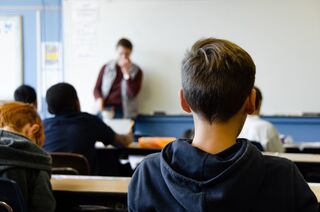Intelligence
Identifying the 'Best' Program for Gifted Learners
Is it possible to find the perfect match for gifted students? We'll find out.
Posted August 30, 2020

Even as the school year gets underway for nearly every district across the United States, colleges, universities, and K-12 programs, both public and private, are in varying degrees of panic and quandaries about what course of action they might take should a COVID-19 outbreak affect their area. Indeed many issues arise on the administrative end: sudden newfound budget implications; the potential for sudden staffing shortages; the protection of students and staff alike; and, yes, there’s still the ever present issue of crafting and making the best decisions regarding students’ educational programming in such tumultuous times. So a reasonable question to ask is this: What types of programs are best for gifted students in the mix of all that has been happening over the past many months?
The answer to this question is, initially, a simple one and one that—you’ll be happy to hear—is true regardless of the events of 2020. The answer is, in fact, about as matter of fact as it can get: the best program for gifted learners is one that meets their needs where they currently are.
I can already see the eye-rolls. So let me explain that last sentence and then expound on it a bit more.
Because talents and abilities differ among those who may be identified as gifted or talented, there simply is no “one size fits all” when it comes to the “best” programming for this population—or any other for that matter. Indeed the “best” program must incorporate a range of services that match the needs, deficiencies, and talents with the student. The good news is that there are a number of ways this might be accomplished.
First, let’s consider what might happen in the regular classroom.
Not every school district has a specific program or center dedicated solely to their gifted clientele. In truth, most do not. As a result, the daily norm in most schools then is that the school’s regular classroom must be a part of the solution. To this end, within the confines of the regular classroom, one of the key elements is that teachers must seek to differentiate their curriculum—as they would for any learner in the room with distinct learning differences. This approach is most easily and more likely to occur if the gifted student is placed with other like learners in a particular class or subject. This approach is typically called “cluster grouping.” This may happen across different teachers or rooms at the upper grade levels; or it may occur within the room in specific subjects at the lower grade levels. Regardless, it is worth asking the teacher if this approach is happening, should you as a parent wonder. It is not safe to assume it is. This type of grouping allows, and to some extent, frees up the teacher to work with gifted students as a group to provide challenging assignments. It also allows other bright students (you can read this article to learn more about the distinction of gifted vs bright) to interact and benefit from time with their higher-ability peers.
Alternatively, there are part-time opportunities that could be accessed. By this, I mean that it’s possible that gifted students might spend some of their time in the regular classroom but then that is supplemented by other time outside of the class. The fourth grade student may, for example, join another fifth grade classroom for math; the student may have a “pull-out” program wherein a specialist designs and implements lessons to augment what happens in the regular classroom. Even within the room, gifted students might work as a group to conduct research projects with the guidance of a resource teacher. High school students might take a class at a community college or university.
Occasionally, though certainly not the norm, a district may be able to offer full-time grouping solely for its gifted population. In these cases, when the abilities of the students sets them apart from their peers in their own age group, this type of full time grouping is ideal. Even if a program or center doesn’t exist, there are still ways to meet the needs of those students by accelerating their curriculum, as was the subject of its own article recently here.
Perhaps the best way to help you assess what approach is suited for you (or your child) is by considering the following questions. To determine which type of program is “best” for the gifted child, you might ask yourself:
- Does the school district show that it has a commitment to gifted education? For example, within the district, is there a professional whose primary responsibility is gifted education? If there is, go seek them immediately so that you can know what already exists as programming options.
- Does your child’s teacher have specialized training or an endorsement in gifted education? If not, does anyone else at that grade level have such certification?
- Do all teachers have access to resources that might help them service gifted students within their classroom?
- Do gifted services exist as an option at all grade levels or are there gaps you’ll need to plan around or anticipate at some point?
- Is acceleration (grade skipping, e.g.) of any sort a possibility?
- At the very least, does the gifted student have the opportunity at some point in the day to work with others of like abilities in a cluster situation?
COVID-19 or not, online or in the classroom, full-time face-to-face instruction or hybrid, the answers to these questions can help you understand a bit better the options available and what you might then do.


